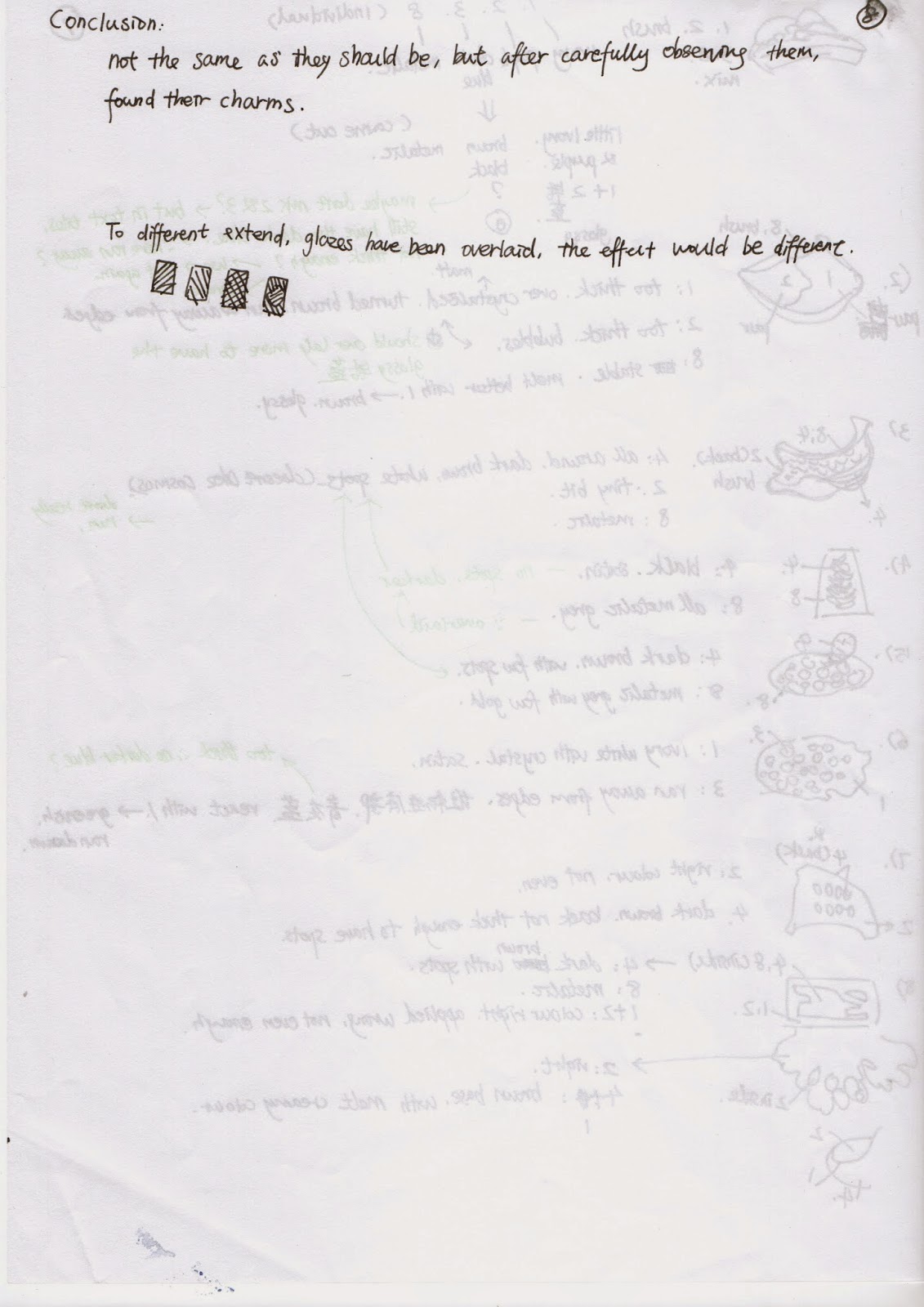This was how our tea party finally looked like. The rest of my fabrics were used as tablecloth and napkin. Tao and I specially went to Ikea and bought some glassware back for the party. He prepared fruits, home-made cap cake, juice, flowers, candy floss. I brought tea, and decor I made before.
These were images we took before the presentation. Everything was ready, apart from the candy floss. To keep them fresh, we decided to make them just before the presentation.
Tao was using his natural dyed sugar to make candy floss. This photo showed that he was trying to make candy floss wrap around the branch on the hare's head.
This was how it looked later.
Then the tea party began. As a part of the project, we invited our tutor and classmates to taste the food and drink we prepared. They specially enjoyed the juice, cup cakes and the candy floss. During the time of eating, we finished our presentation. I am satisfied with all we have done. It was a happy and wonderful experience.
The pink candy on the top was a happy accident found during making candy floss. Some of the sugar was too heavy to form the floss that it was spun on the wall of the machine, together form this crystallised candy.
This was the photo I took afterwards. over-left food, the marks of juice on the glass, and withered candy floss showed a scene quite different from the beginning, a sense of decay, and ending.
Juice marks on the table.
Summary
We have two aims. One is learning how to use fruits and vegetables as dye. I dyed fabrics and made them into decorations. Tao dyed sugar, and made candy floss. Together, we presented a Mad Tea Party, inspired by Alice in Wonderland. Another aim is having fun.
In the process of making, I found it was hard to fix the colour after dying. I boiled the fabrics in salt/vinegar water for an hour first, depending on the dye was made of fruits or vegetables. This process will help fix colour. At the same time, I cooked the dye solution for an hour. After I rain the fabrics with water, I put them into warm dye solution for one hour or more. The recipes of natural dying were found online, which didn’t explain everything. I did borrow some interesting books from the library about dying with natural materials, but I didn’t finish them. However, if I want to learn more about natural dying next time, I know where to find the knowledge. Tao had difficulty to dry and sieve the dyed sugar. Because the candy floss machine requires dry and fine sugar to operate correctly.
Apart from those problems we had, we also had a lot of fun. I noticed that if I spilled a little water on the dyed fabric, the colour will change from blue or purple to green, which accidentally gave some variation to the colour. Tao found that when the dyed sugar was not dry enough, it was to heavy for the machine to form “clouds”. However, the dyed sugar was spun on the cover around the machine, and formed some coloured, transparent candy which looked really good. We also made a lot of by-products during making, such as jam, juice, icing for cake. Being related to food truly cheered us up. For the Mad Tea Party table setting, we went to IKEA together, purchasing suitable glass tableware. I really enjoy all of the experience we shared.
Though We didn’t really follow the plan, our aims have been achieved. Or maybe in this case, the plan is not important anymore, with less stress, but more joy and feeling. There was no given theme that we can do whatever we like, and in whatever way we like. Our classmate suggested that perhaps we can consider doing a performance, showing the process. Also showing an end of the tea party could be interesting, with left-over food, knocked over glasses, or juice on the fabric. It gives a sense of time, or a feeling that something happened in the past. I would like to develop these ideas, if we have further chances. Overall, I really enjoyed this collaboration, and feel satisfied. It is the best experience of group project I have ever had.










































































